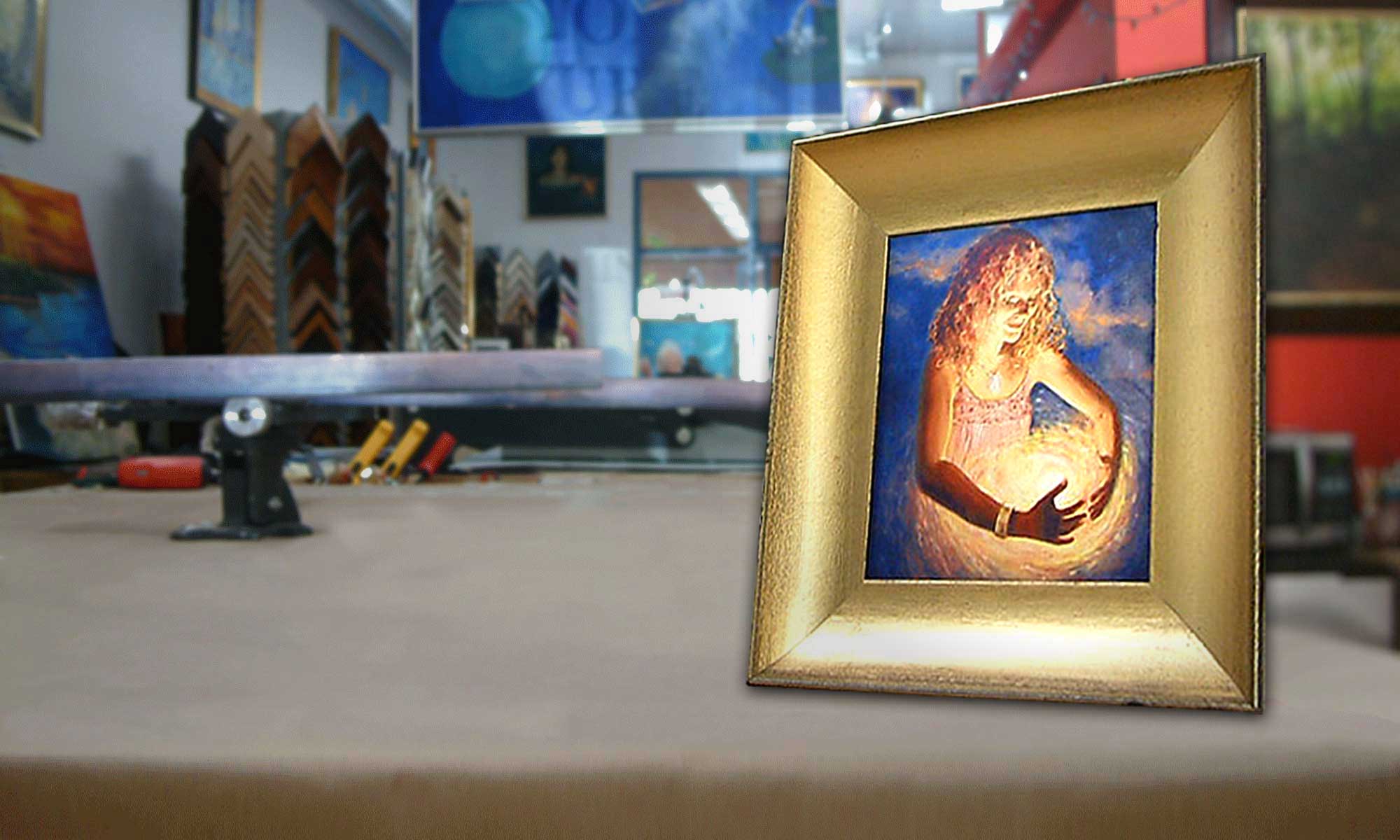 Artwork will last longest if it’s kept in a dark, pollution free, temperature controlled environment, but who will see it there? A frame enhances the look of your art, and allows you to display it, but it should also protect it from pollutants and the effects of ultra violet light.
Artwork will last longest if it’s kept in a dark, pollution free, temperature controlled environment, but who will see it there? A frame enhances the look of your art, and allows you to display it, but it should also protect it from pollutants and the effects of ultra violet light.
Glazing Options
Conservation Glass is typically recommended for works on paper. It is manufactured with a coating which blocks UV light. This helps prevent fading of fugitive inks commonly used in posters and prints. It also helps keep the paper itself from deteriorating.
Nonglare Glass is etched on one side to diffuse reflected light. It is effective in preventing glare, but it does somewhat blur the image.
Museum Glass is manufactured with BOTH a conservation coating and an anti-reflective coating which greatly reduces glare, but is not necessarily 100% effective in all circumstances.
Acrylic (plexiglass) is recommended for large works (over 36″ x 48″), or anything you plan to ship. Acrylic should not be used with pastel or charcoal drawings, because it’s inherent static charge will lift the pastel dust off the paper. It is available in regular clear, non-glare, conservation (uv filter), conservation non-glare, and Optium Museum Acrylic which is anti-reflective (but not blurry) uv filtering, anti-static, and scratch resistant. Like museum glass, it will not necessarily be reflection free in all circumstances. Glare depends on the angle of the light, the angle of viewing, and the darkness of the artwork.
About Mats
 There are hundreds of mat boards available, in nearly every color. There are fabric boards in suede, linen and silk, there are embossed and patterned boards to simulate leather, marble, japanese paper, burlap, etc. However, from a conservation standpoint, all matboards are not created equal.
There are hundreds of mat boards available, in nearly every color. There are fabric boards in suede, linen and silk, there are embossed and patterned boards to simulate leather, marble, japanese paper, burlap, etc. However, from a conservation standpoint, all matboards are not created equal.
Decorative matboard — sold by most art supply stores, also referred to as paper mat board. This is often marketed as ‘acid-free’ because it is pH neutral at the time of manufacture. However, it will not remain acid-free unless the acidic component (lignin) has been removed from the wood pulp during the manufacturing process.
Lignin-free mat boards — these are generally considered archival, and they will remain acid-free. They are available in a wide range of colors, textures, and patterns. At Frameworks of Ojai, all our matboards are either archival or museum quality.
Museum boards — these are made from 100% cotton, which naturally contains minimal amounts of lignin, and are the best choice to protect valuable etchings, watercolors, and other artworks on paper. Colors are limited.
 Double-thick or 8-ply mats add depth and provide more space between the art and glazing. Colors are limited.
Double-thick or 8-ply mats add depth and provide more space between the art and glazing. Colors are limited.
Foamcore boards — commonly used to back artwork, normal foamcore you find at craft stores is not acid-free. We use foam boards which are not only acid-free, but specifically engineered to absorb air pollutants. Collectible artwork on paper should always be backed with museum board for maximum protection.

